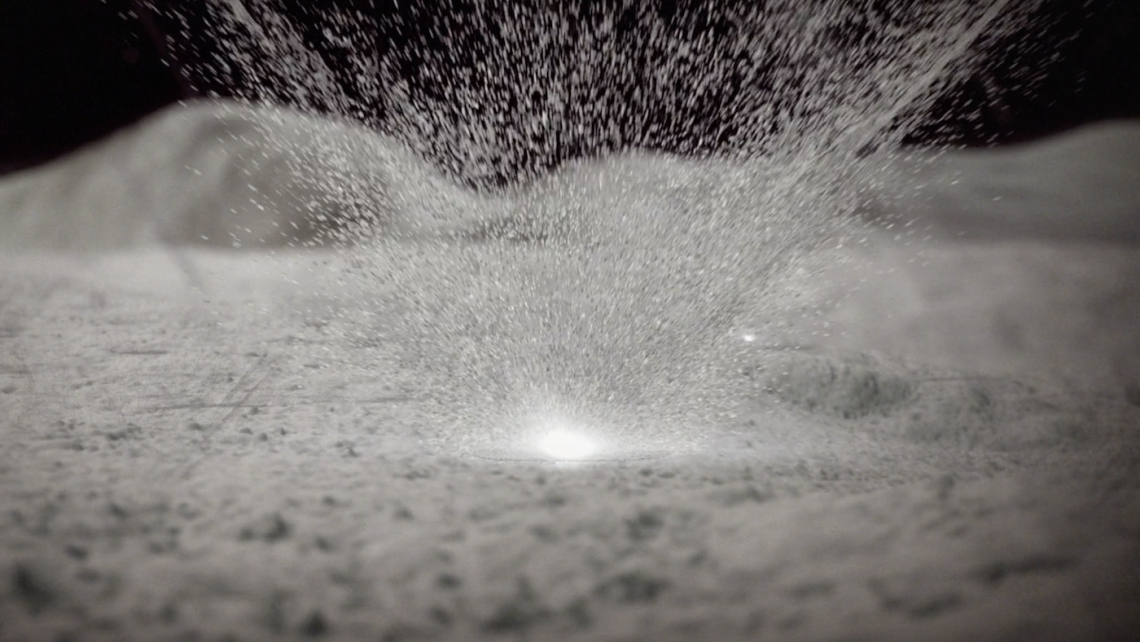Moon rocks blasted off the lunar surface could become near-Earth asteroids
Scientists have discovered how space rock Kamo'oalewa was ejected from the moon and became a near-Earth asteroid.

Chunks of the moon may blast into space and become near-Earth asteroids, a new study suggests.
The finding confirms previous research showing that near-Earth asteroid Kamo'oalewa is a piece of the moon. That 2021 link to the moon's history was shocking, as previously only distant asteroids from beyond the orbit of Mars were considered sources of near-Earth asteroids.
The new research, led by University of Arizona planetary scientist Renu Malhotra, offers a mechanism by which moon rocks could be ejected from the lunar surface and become near-Earth asteroids, or space rocks. The research also suggests that in addition to Kamo'oalewa, more lunar fragments may be found among Earth asteroids.
"We are now establishing that the moon is a more likely source of Kamo'oalewa," Malhotra said in a university statement Monday (Oct. 23).
Related: NASA's Lucy probe will fly by a 'dinky' asteroid on Nov. 1. Here's what to expect (video)
The team's findings could help scientists better understand the population of near-Earth asteroids, which is knowledge that could one day help protect our planet from a strike by such a space rock.
Two unusual properties led researchers from the University of Arizona to study Kamo'oalewa. Firstly, it is an asteroid that is so close to Earth that despite actually orbiting the sun, it appears to orbit Earth, making it a so-called "quasi-satellite."
Get the Space.com Newsletter
Breaking space news, the latest updates on rocket launches, skywatching events and more!
Secondly, the asteroid has a strange longevity, with scientists predicting it will remain close to our planet for millions of years. For comparison, other objects in near-Earth orbits stick around our planet for mere decades.
In 2021, using spectroscopy, which measures the specific wavelengths of light absorbed and emitted by chemical elements, scientists found that the chemistry of Kamo'oalewa closely resembled that of the moon. The asteroid's composition led scientists back then to suggest Kamo'oalewa may have been ejected from the lunar surface
"We looked at Kamo'oalewa's spectrum only because it was in an unusual orbit," Malhotra said. "If it had been a typical near-Earth asteroid, no one would have thought to find its spectrum, and we wouldn't have known Kamo'oalewa could be a lunar fragment."
Can a lunar fragment escape to orbit the sun?
It used to seem implausible that a piece of the moon could be knocked off to reach the orbit of a quai-satellite, based on past research. The moon is covered in craters, which is a "fossil record" of asteroid impacts that would have flung material high above the moon. Yet most of this launched matter falls back to the lunar surface. On the other hand, some material launched from the moon is ejected with such force that it lands here on Earth.
Quasi-satellite lunar chunks, by contrast, would need even more kinetic energy to orbit the sun and become near-Earth asteroids.. Malhotra and her team thus set about determining if there was a feasible moon ejection origin for Kamo'oalewa.
Running a simulation, which factored in the gravitational forces of all the planets in the solar system, the crew discovered that a select few lunar fragments could escape the gravity of Earth and the moon and find their way to quasi-satellite orbits around the sun. That means Kamo'oalewa could be one of those lucky few. The team will now attempt to determine the exact conditions needed to put Kamo'oalewa on its exact orbital pathway. They will also work on deducing the exact age of the quasi-satellite.
The team's research was published Monday in the journal Nature Communications Earth & Environment.
Join our Space Forums to keep talking space on the latest missions, night sky and more! And if you have a news tip, correction or comment, let us know at: community@space.com.

Robert Lea is a science journalist in the U.K. whose articles have been published in Physics World, New Scientist, Astronomy Magazine, All About Space, Newsweek and ZME Science. He also writes about science communication for Elsevier and the European Journal of Physics. Rob holds a bachelor of science degree in physics and astronomy from the U.K.’s Open University. Follow him on Twitter @sciencef1rst.









